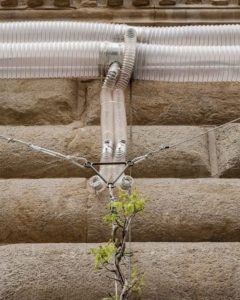Oliver Ressler. Barricading the Ice Sheets. Edited by Corina Apostol, Marius Babias, Reinhard Braun, Pablo DeSoto, Gabriela Salgado and Leila Topić. With texts by Oliver Ressler, Andreas Malm, T. J. Demos, Ameli M. Klein, Kodwo Eshun, Doreen Mende, Toni Negri, Marco Baravalle, Pujita Guha, Anja Steidinger and Nora Sternfeld.
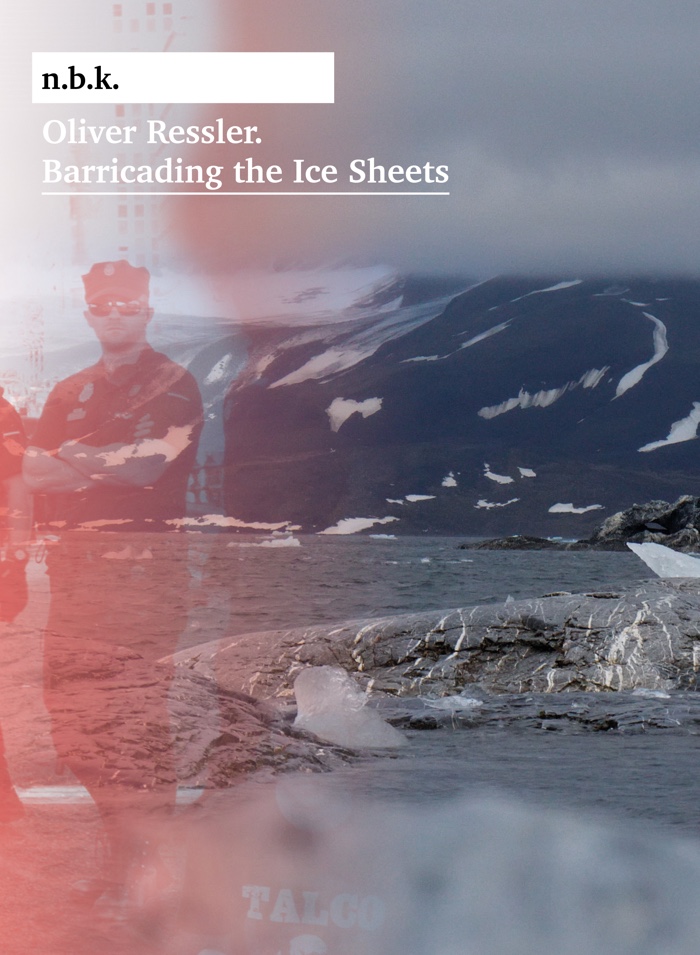
The idea of “barricading the ice sheets” reminds me of the Swiss glaciers covered with tarpaulins to protect them from global warming. Both ideas are absurd. Barricading the ice sheets, however, is an unworkable enterprise. In fact, Oliver Ressler writes, “To barricade ice sheets as they are melting at fast pace is physically impossible.” And yet, despite the enormity of the challenge, communities of activists across the world are defying the most fearsome threat in recorded human history.
The book Barricading the Ice Sheets wraps up 4 years (2019–2023) of an interdisciplinary research project and series of exhibitions that chronicle the mobilisations of climate activists through their activities and present different approaches and methods for an artistic-activist practice. I saw one of the shows at the Museum of Contemporary Art in Zagreb back in 2021. I was shocked and moved by all the material exhibited, but i had yet to blog about it.
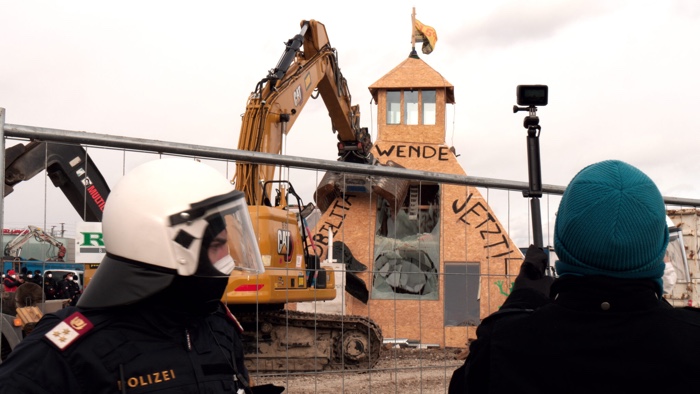
Oliver Ressler, The Desert Lives, 2022
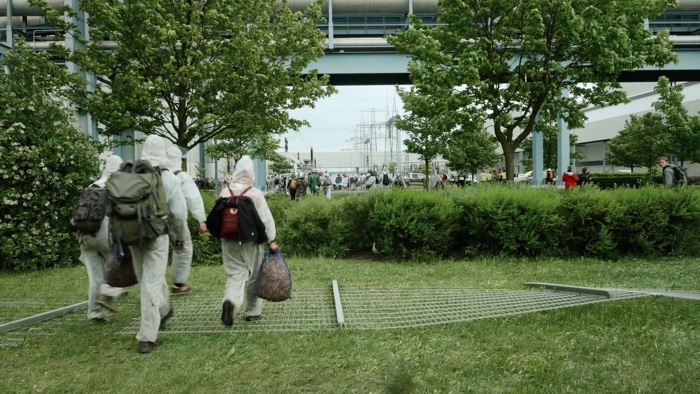
Oliver Ressler, Everything’s Coming Together While Everything’s Falling Apart: Ende Gelände (film still), 2016
The exhibitions, just like this book, investigate the intersection of climate breakdown with climate justice protests and the relation of the movements to artistic practices. Ressler’s work reveals how this theme can be both deeply upsetting and surprisingly inspiriting. The fight for ecosystem protection and environmental justice has a long and admirable history but its impact has so far been fairly disappointing. No matter how loud the voices raised against overconsumption, deforestation or fossil fuel extraction are getting, they always seem to be smothered under the weight and money of the greediest expressions of capitalism. On the other hand, Ressler’s film projects, installations, photographs and drawings testify to the resilience and agility of climate justice movements. They might lose battles but they won’t give up the fight.
Another key quality of Barricading the Ice Sheets is the way it demonstrates the possibility to weave mutually fruitful connections between art and activism. Over the past few years, many books and group exhibitions have illustrated the encounter between art and activism but Ressler’s practice presents what this looks like. In detail, in action and from the inside.
There’s also something quietly convincing in his works. They are powerful but they are fact-based and, as such, they never require extra drama or morality lessons.
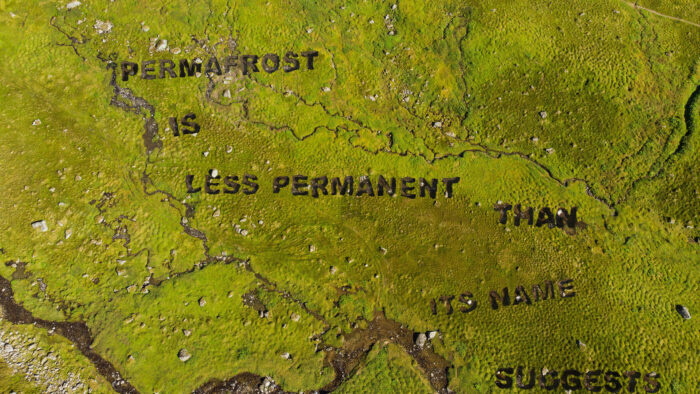
Oliver Ressler, Arctic permafrost is less permanent than its name suggests, 2019
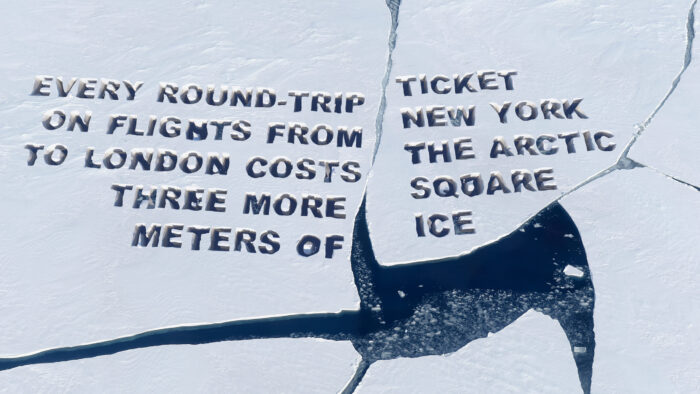
Oliver Ressler, Every round-trip ticket on flights from New York to London costs the Arctic three more square meters of ice, 2019
The publication documents the exhibition cycle and features essays by art critics, art workers, curators, theorists and climate activists who comment on key aspects of Ressler’s practice or on specific artworks. Here are a few lines about some of the texts i found particularly pertinent:
The introductory essay by Corina Apostol, Marius Babias, Reinhard Braun, Pablo DeSoto, Gabriela Salgado, Leila Topić who curated Ressler’s solo shows in their respective art spaces across Europe, attempts to define Ressler’s role as an artist in the context of environmental activism. He is documenting the actions and assemblies he follows but he is also harnessing the power of institutional cultural spaces to expand activists’ interventions, spreading their tactics and messages into cultural discourses and public debates.
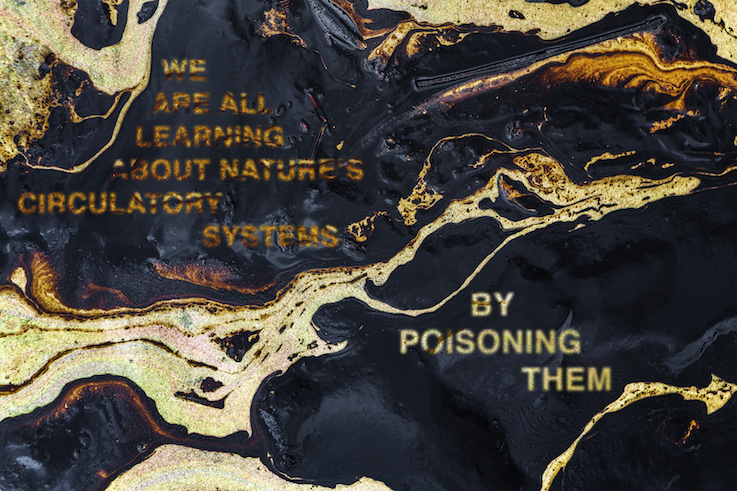
Oliver Ressler, We are all learning about nature’s circulatory systems by poisoning them, 2021
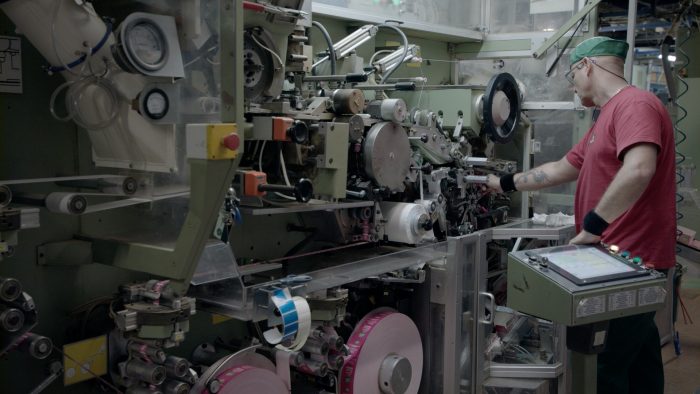
Dario Azzellini and Oliver Ressler, Occupy, Resist, Produce – Scop Ti (film still), 2018
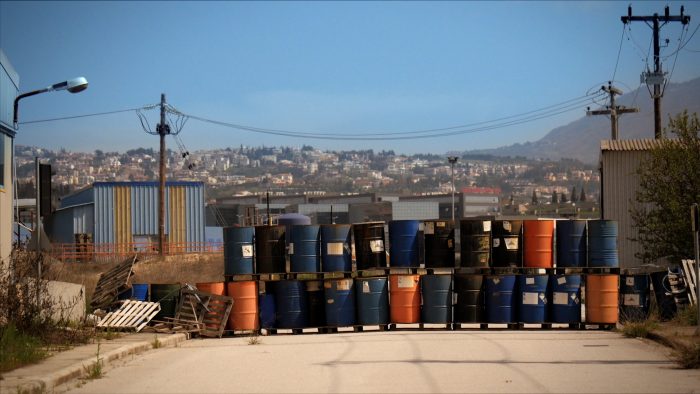
Dario Azzellini and Oliver Ressler, Occupy, Resist, Produce – Vio.Me. (film still), 2015
In his essay, author and professor of human ecology Andreas Malm does what he does best: he encourages environmental activists to more decisively shift from protests (which so far have been pretty ineffective) to active resistance. This resistance takes the form of sabotages of new CO2-emitting devices (for example, what Tyre Extinguishers do to SUV cars in European and US cities.) The purposes of such disruptions is twofold: discouraging the investment of climate-wrecking devices and infrastructures and demonstrating that they can be put out of business.
Art historian T. J. Demos calls for art practices that contribute to 4 key imperatives: a broadening of “the frame of struggle from environmentalism to anti-imperialism”, a transnational solidarity to secure effective resistance; the involvement of a working-class base without whom transformative change cannot happen and finally, the construction of what Demos calls “a majoritarian politics of life.”
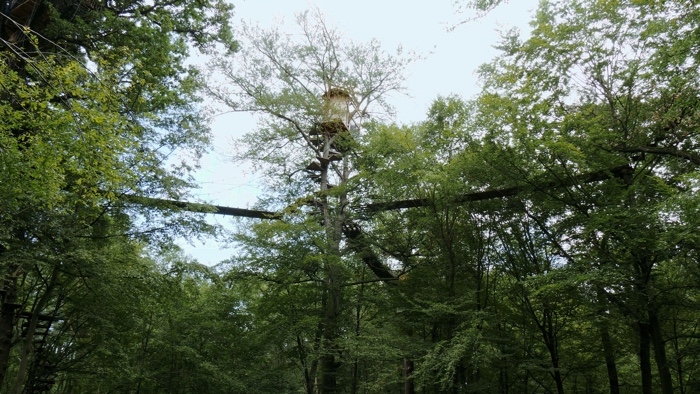
Oliver Ressler, The Path is Never the Same, 2022
Zanny Begg and Oliver Ressler, The Right of Passage, 2013
Cultural worker Ameli M. Klein writes about the necessity of engaging critically with the growing gap between ideology and methodology within institutional frameworks. One of the most interesting ideas she mentions is Etienne S. Benson‘s argument that the environmental preservation movement may have “paradoxically tempted many to a kind of environmental universalism – that is, toward assuming that all people have or desire the same kinds of relations to their surroundings.” This intrinsic bias may spur some experts to speak as if they were the voice of all humanity when instead they ignore the specific vulnerabilities of particular human groups. In that light, Klein notes that Ressler’s focus on hyper-local contexts allows him to avoid falling into the rhetoric of universalism.
Philosopher Toni Negri‘s text analyses the various meanings that the term common has adopted through time and contexts. He builds on the concept of mésos (μέσος in Greek means environment) to develop mesopolitics, the ability of being in the milieu and to build powerful politics from it. Negri sees in Ressler’s work a place where the realms of milieu and the common come together.
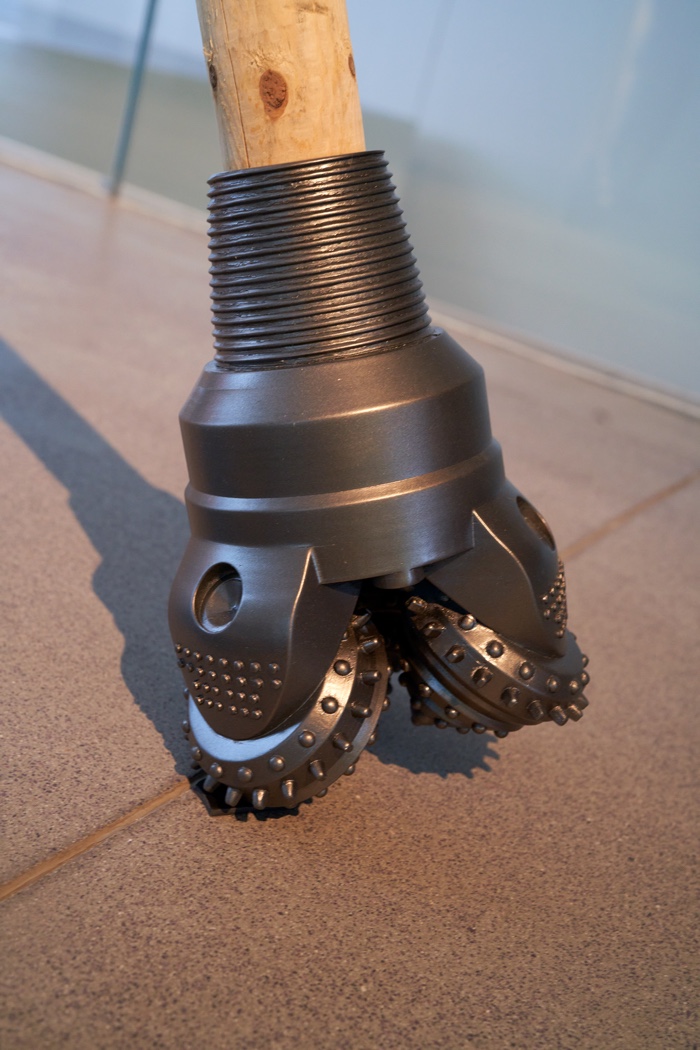
Oliver Ressler, Drillbit, 2021. Installation view: “Barricading the Ice Sheets” (solo show), Museum of Contemporary Art Zagreb, 2021. Photo: Boris Berc
Spreads from the publication:
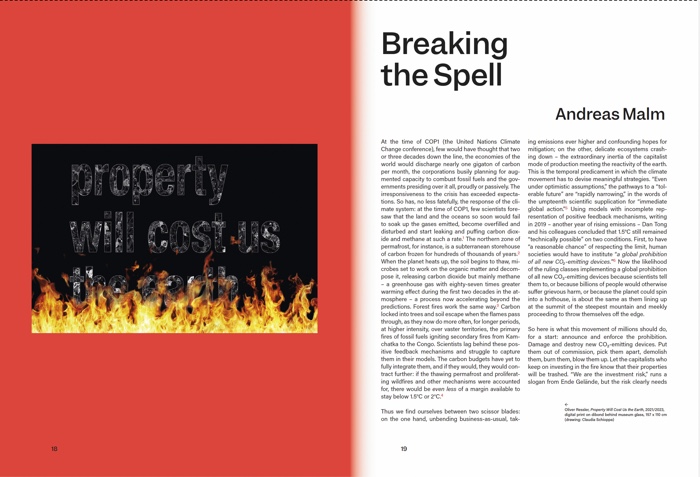
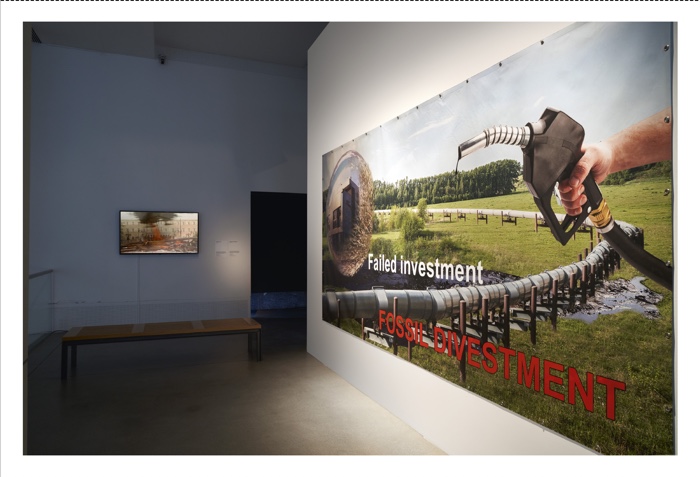
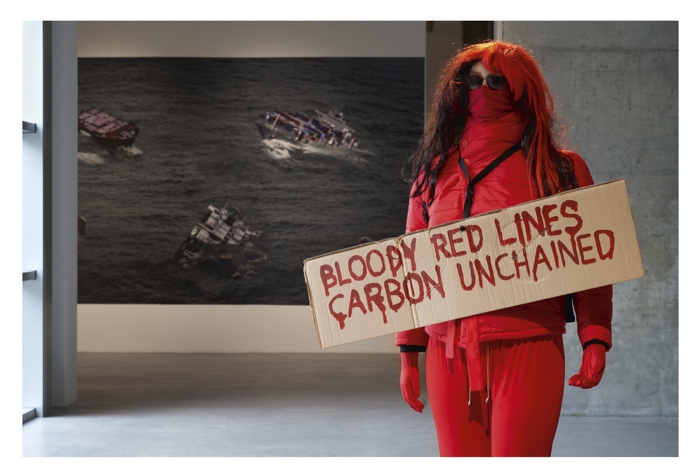
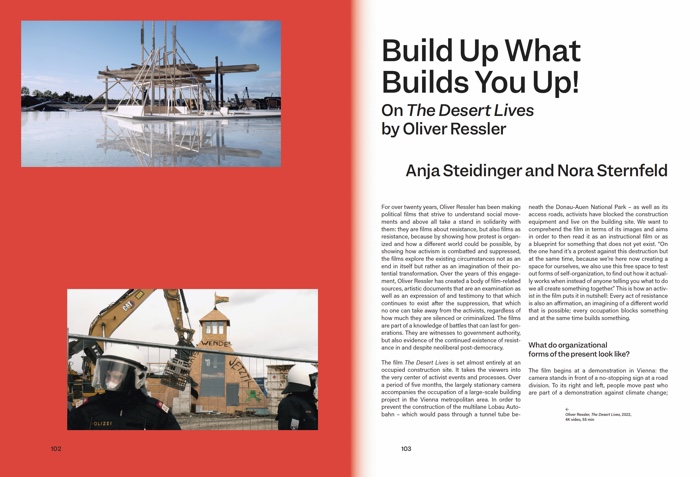
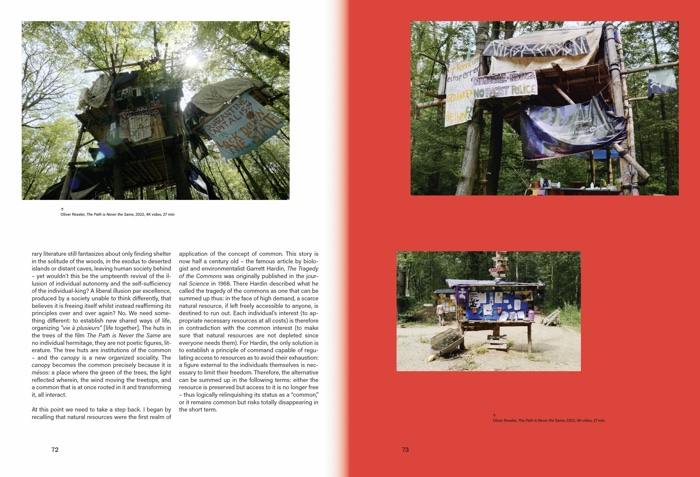
The publication is bilingual (English and German.) It can be purchased at Neuer Berliner Kunstverein and in local bookshops. Or online via the websites of Buchhandlung Walther König and Camera Austria.
Related stories: Flood Tide of Resistance. An interview with Oliver Ressler, How to Blow Up a Pipeline. Learning to Fight in a World on Fire, Art and Climate Change, etc.

